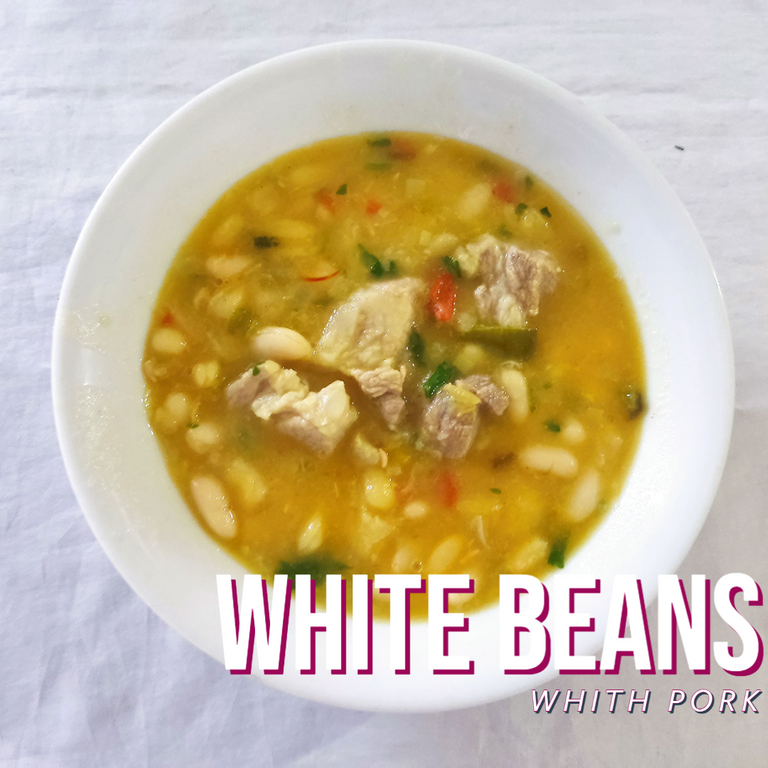
¡Saludos a todos en esta comunidad!
El día de hoy les vengo con una confesión: resulta que nunca fui amante de los granos, me parecían alimento bastante para mí. Cada vez que veía que mi madre empezaba a separar los granos en la cocina ya me ponía de mal humor, peor aún fue cuando tuve la edad para hacerlo. Nunca me las comía, prefería comer la proteína animal que siempre acompañaba el plato y dejaba los granos a un lado, solo toleraba las arvejas, así que era lo que más se hacía en casa por ser lo que me gustaba. Hay algo aún peor, y es que mi abuela es española, es natural de Asturias y allá hay un plato tradicional llamado "Fabada Asturiana" hecho a base de habas blancas que yo pasaba aún menos.
Nunca supe en detalle el porqué de mi adversión a los granos, y no fue sino con el pasar de los años y la necesidad por la crisis que vivimos en Venezuela unos años atrás, cuando empecé a preparar granos para mi consumo. Siempre los hacía para mi familia, pero nunca no los comía. Con el pasar de los años, es ya común que los prepare, pero los evito, porque aunque les he tomado bastante amor, no los digiero bien y me caen muy mal en el estómago. Pero cada vez que puedo los preparo.
En esta oportunidad me aventuré a preparar el que menos me gustaba: caraotas blancas, y le puse un poco de cerdo porque no conseguí nada ahumado. A mí encantan los huesos, codillos, paticas, en los granos, pero a mi hermana no le gusta y solo le puse pulpa y paleta de cerdo. A continuación les muestro los ingredientes que utilicé, una receta con una mezcla ibérica y criolla:
Greetings to everyone in this community!
Today I come to you with a confession: it turns out that I was never a lover of grains, I thought they were food enough for me. Every time I saw my mother start to separate the grains in the kitchen I was already in a bad mood, and it was even worse when I was old enough to do it. I never ate them, I preferred to eat the animal protein that always accompanied the dish and left the grains aside, I only tolerated peas, so it was the most common thing to do at home because it was what I liked. There is something even worse, and that is that my grandmother is Spanish, she is a native of Asturias and there is a traditional dish called "Fabada Asturiana" made from white beans that I would pass even less.
I never knew in detail why I had an aversion to beans, and it was only with the passing of the years and the need due to the crisis that we lived in Venezuela a few years ago, when I began to prepare beans for my own consumption. I always made them for my family, but I never did not eat them. Over the years, it is now common for me to prepare them, but I avoid them, because although I have taken quite a lot of love for them, I do not digest them well and they are very bad for my stomach. But whenever I can I prepare them.
This time I ventured to prepare the one I liked the least: white beans, and I added some pork because I couldn't get anything smoked. I love the bones, knuckles, feet, in the grains, but my sister doesn't like it and I only put pork pulp and pork shoulder. Below I show you the ingredients I used, a recipe with an Iberian and Creole mix:
Ingredientes:
500 gr de cerdo picado.
500 gr de caraotas blancas.
1 cebolla mediana.
1 pimentón pequeño.
3 ajíes dulces.
Cebollín.
Puerro.
2 dientes grandes de ajo o 10 pequeños.
Cilantro.
Especies: Laurel, pimentón español, cúrcuma, pimienta, comino, sal, azafrán.
Aceite de oliva.
Ingredients:
500 gr of minced pork.
500 grams of white beans.
1 medium onion.
1 small bell pepper.
3 sweet peppers.
Chives.
Leek.
2 large garlic cloves or 10 small ones.
Cilantro.
Spices: bay leaf, Spanish paprika, turmeric, pepper, cumin, salt, saffron.
Olive oil.
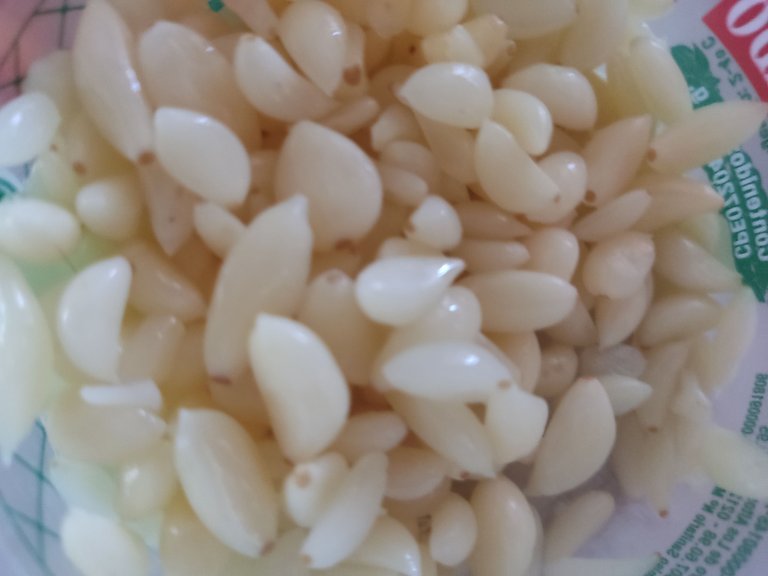 | 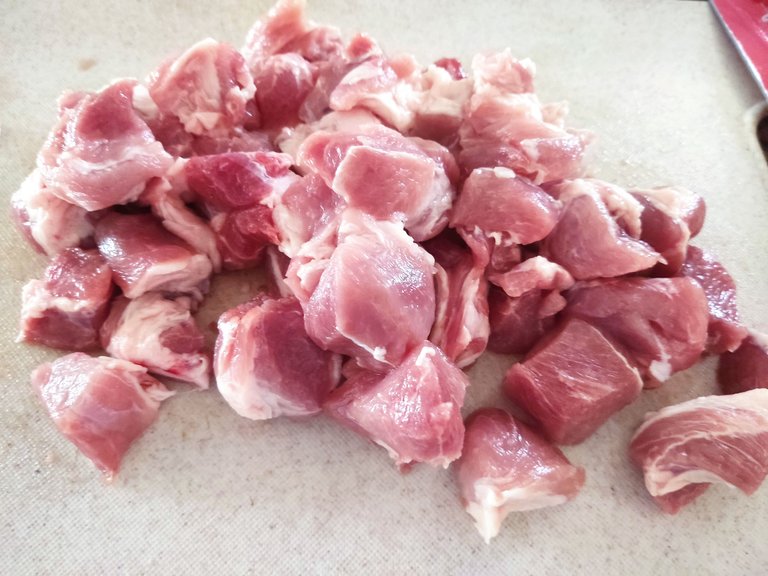 | 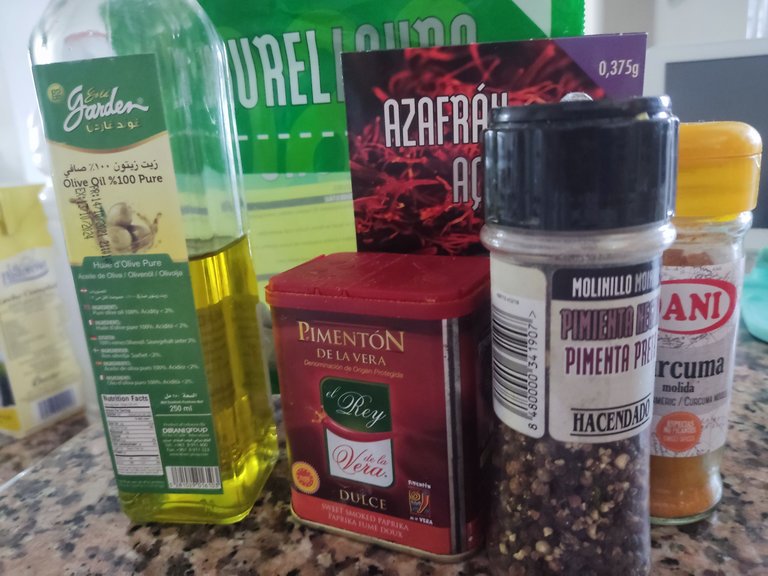 |
|---|
Preparación:
Ponemos a remojar las caraotas blancas en agua con sal desde la noche anterior. Al levantarnos le cambiamos el agua cuantas veces sea necesario hasta que esta ya no suelte una espuma blanca que se forma en la parte superior del agua. Esta espuma es la causante de los gases que nos producen los granos. Luego, ponemos a cocinar en una olla de presión los granos durante media hora. También puedes cocinarlos aparte si no cuentas con una, durante una hora.
En una olla agregamos todos los vegetales picados y lo sofreímos con un chorro generoso de aceite. Cuando todo esté transparente, agregamos el cerdo previamente picado en cubos, sofreímos y tapamos a fuego bajo durante unos 5 minutos.
Preparation:
We soak the white beans in salted water since the night before. When we get up we change the water as many times as necessary until it no longer releases a white foam that forms on top of the water. This foam is the cause of the gases that produce the grains. Then, we cook the beans in a pressure cooker for half an hour. You can also cook them separately if you do not have one, for one hour.
In a pot we add all the chopped vegetables and fry them with a generous splash of oil. When everything is transparent, add the pork previously chopped in cubes, fry and cover over low heat for about 5 minutes.
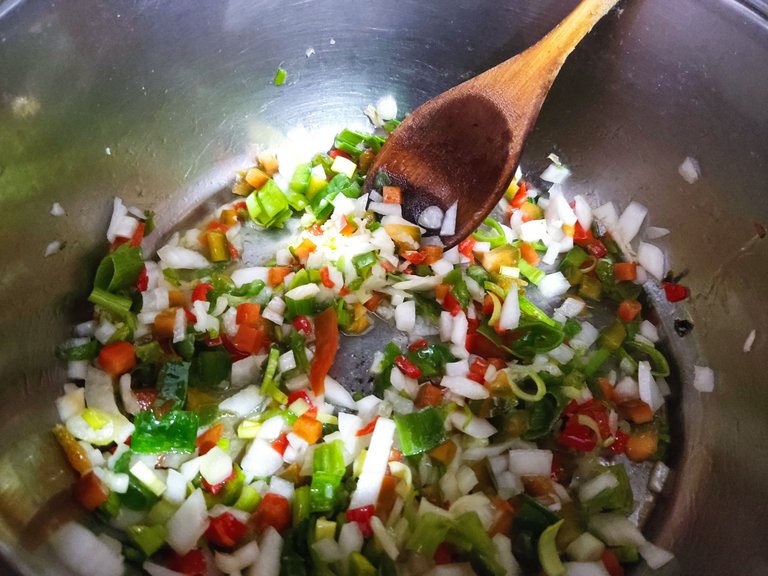 | 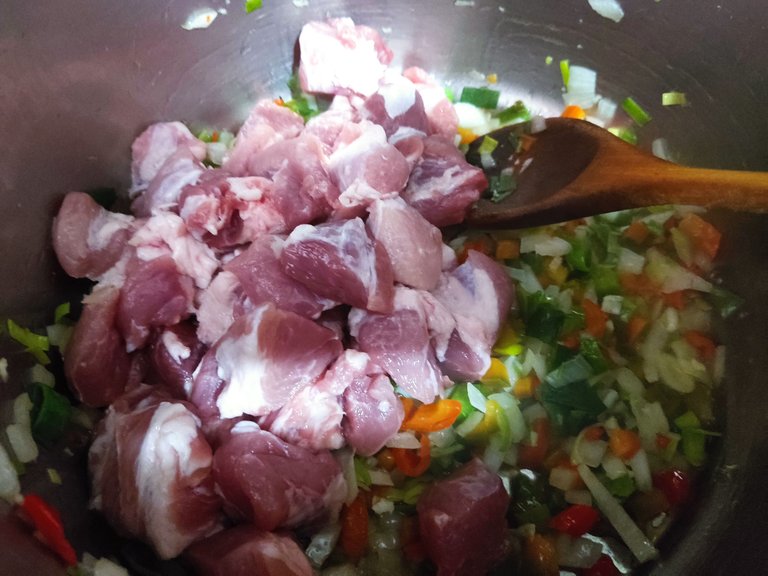 |
|---|---|
 | 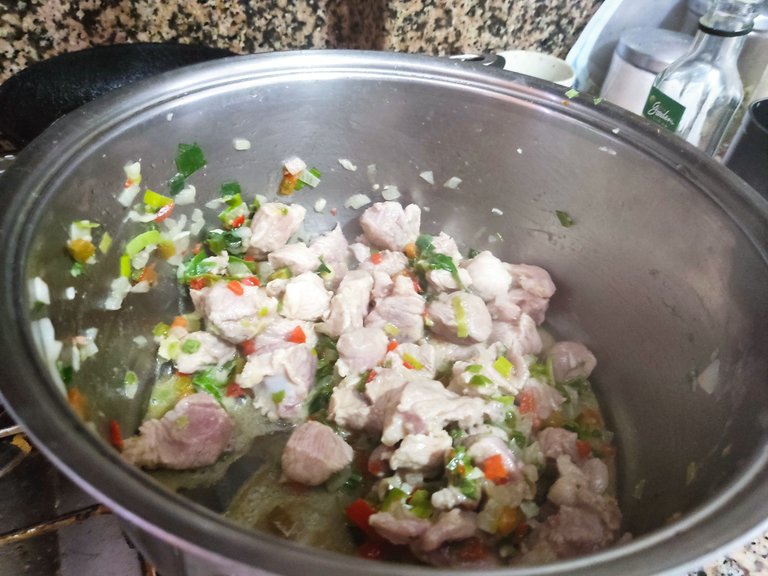 |
Transcurrido este tiempo, agregamos los granos a la olla y terminamos de cubrir con más agua si esto es necesario. Le agregamos las especies y comprobamos la sal, tapamos y dejamos cocinar durante unos 10 minutos para que se integren los sabores.
After this time, add the beans to the pot and finish covering with more water if necessary. Add the spices and check the salt, cover and let cook for about 10 minutes to integrate the flavors.
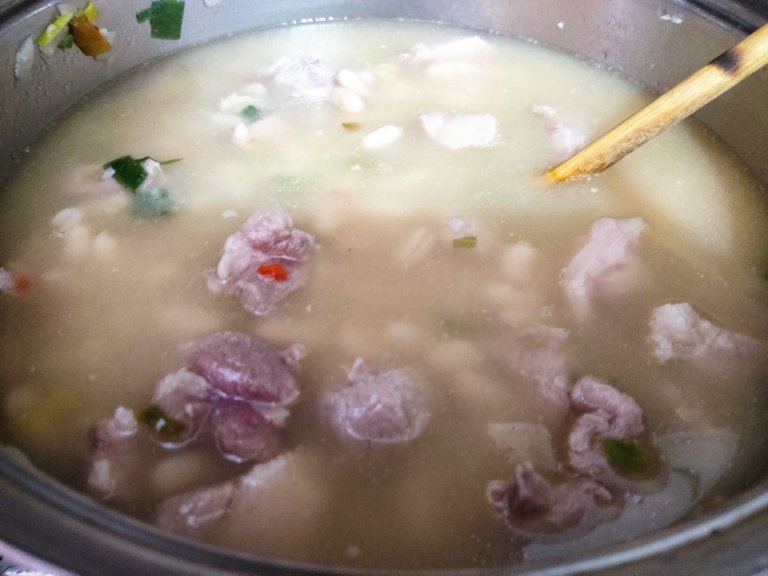 | 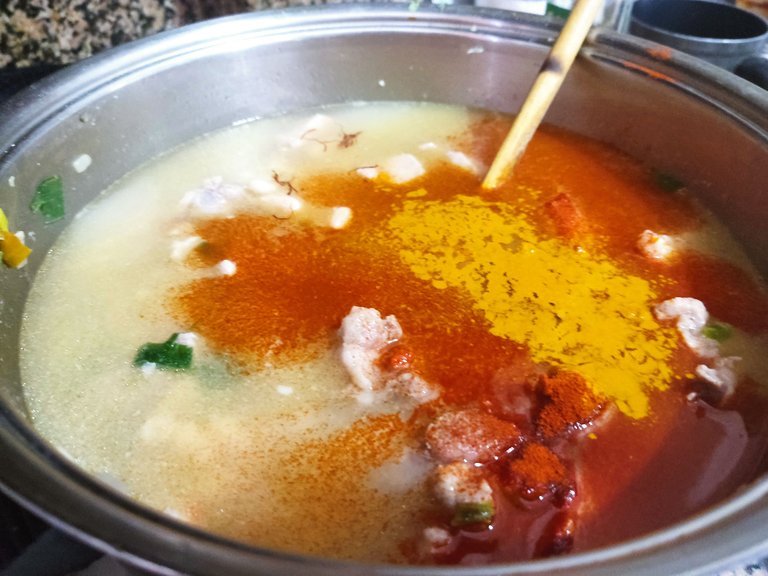 |
|---|---|
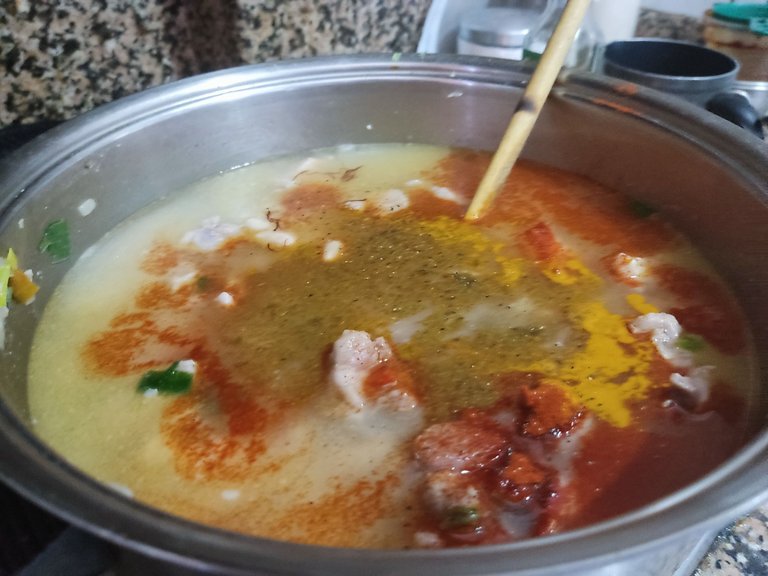 | 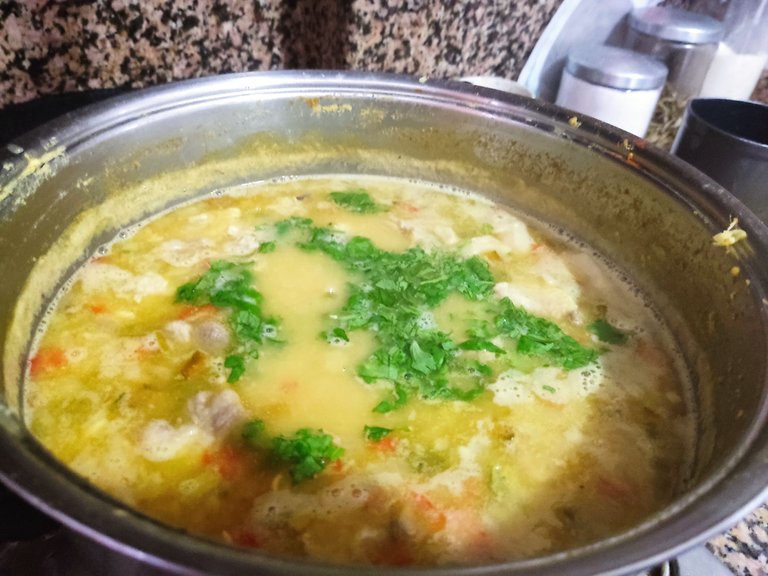 |
Cuando ya esté todo cocido, los sabores integrados, le agregamos cilantro picadito.
Servimos bien caliente con un poco de arroz blanco. ¡Y a comer!
When everything is cooked and the flavors are integrated, add chopped cilantro.
Serve hot with a little white rice and eat!
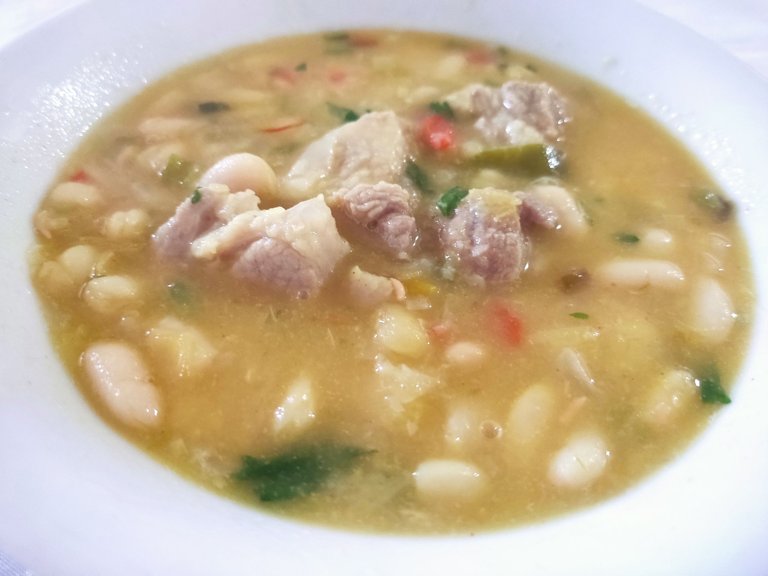 | 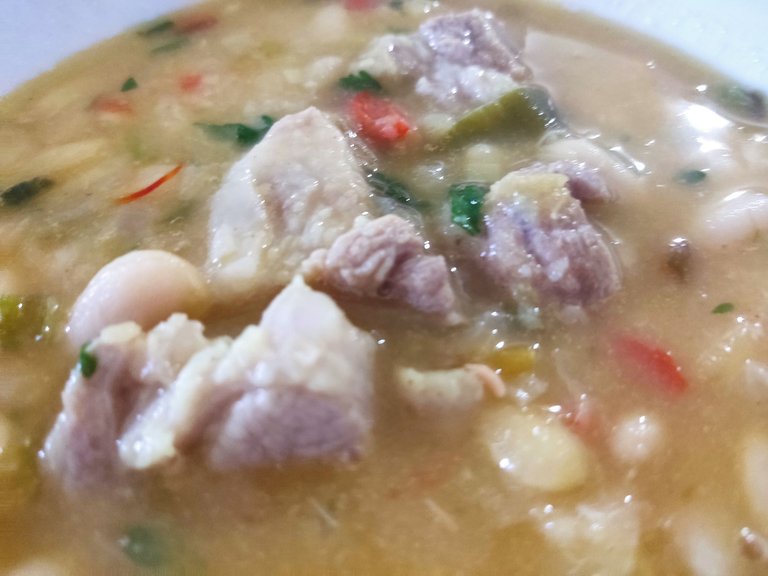 |
|---|
La parte criolla en este plato es a presencia del ají dulce, que es muy venezolano, y la parte ibérica son las especies como el laurel, el pimentón español y las hebras de azafrán que hicieron de este plato una delicia. Si no tienen estos ingredientes, no se preocupen, solo con el comino y el cilantro ya hacen de este un plato delicioso y espero que lo puedan reproducir.
The Creole part of this dish is the presence of the sweet chili bell pepper, which is very Venezuelan, and the Iberian part is the spices such as bay leaf, Spanish paprika and saffron strands that made this dish a delight. If you don't have these ingredients, don't worry, just the cumin and coriander make this dish delicious and I hope you can reproduce it.
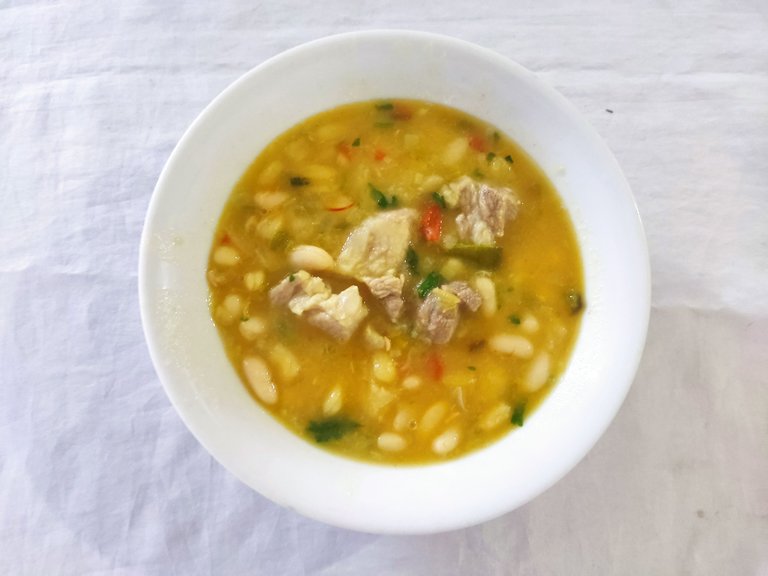

- Banner made in Adobe Creative Cloud Expresive
- Footer made in Canva
- All photos were taken with a Poco x3 pro.
Prometo contar la historia de la creacion de esta nueva cuenta en cuanto pueda. Para leer el resto de mis publicaciones: laloretoyya.
Ay Pero que sabroso se ve eso, a mi los granos me gustan dulces con un poquito de papelón. 😄
Que delicioso le debió quedar esta receta, a mi me encantan todos los granos.
Pero al igual que a ti, algunos no me caen muy bien, me producen muchos gases.
Aún así, si quedan así de divinos como se ven esos, no hay dolor que valga, igual me los como.
Ya me extrañaba lo de la nueva cuenta.
Esperamos el cuento.
Congratulations @soy-laloreto! You have completed the following achievement on the Hive blockchain and have been rewarded with new badge(s):
Your next target is to reach 50 upvotes.
You can view your badges on your board and compare yourself to others in the Ranking
If you no longer want to receive notifications, reply to this comment with the word
STOPCheck out the last post from @hivebuzz:
Support the HiveBuzz project. Vote for our proposal!
Esa receta se ve y se lee completamente deliciosa, fue muy entretenido y educativo ver cómo creaste este maravilloso post. Espero seguir leyendote en esta cuenta, mereces mucho éxito